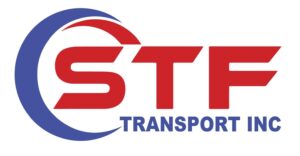
The Canadian trucking industry is a vital component of the nation’s economy, facilitating the movement of goods and materials across vast distances and diverse landscapes. From bustling urban centers to remote rural communities, trucks play a crucial role in delivering goods to businesses and consumers alike. In this blog post, we’ll explore key insights, trends, and challenges facing the Canadian trucking industry, shedding light on the dynamic landscape of transportation in Canada. The Canadian trucking industry is a dynamic and essential component of the nation’s economy, supporting commerce, trade, and economic growth. Despite facing challenges such as driver shortage, regulatory complexity, and environmental concerns, the industry remains resilient and adaptable, driven by innovation, technology, and a commitment to excellence. By staying informed about industry trends, embracing technological advancements, and fostering collaboration, stakeholders in the Canadian trucking industry can navigate challenges and capitalize
1. Essential Role in the Economy:
The Canadian trucking industry is the backbone of the nation’s economy, contributing significantly to the transportation of goods within Canada and across international borders. Trucks transport a wide range of products, including food, consumer goods, raw materials, and manufactured goods, supporting industries such as retail, manufacturing, agriculture, and construction.
2. Industry Size and Scope:
The Canadian trucking industry is vast and diverse, encompassing a wide range of companies, from small owner-operators to large fleet carriers. According to Statistics Canada, there are over 36,000 trucking companies operating in Canada, with approximately 300,000 registered trucks and over 400,000 drivers.
3. Cross-Border Trade:
Canada’s proximity to the United States makes cross-border trade a significant aspect of the trucking industry. Trucks transport billions of dollars’ worth of goods between Canada and the U.S. each year, facilitating trade across key border crossings such as the Ambassador Bridge in Windsor, Ontario, and the Peace Arch Border Crossing in British Columbia.
4. Technological Advancements:
Advancements in technology are transforming the trucking industry, with innovations such as electronic logging devices (ELDs), GPS tracking systems, and telematics improving efficiency, safety, and compliance. Additionally, the emergence of autonomous vehicle technology holds the potential to revolutionize the way goods are transported in the future.
5. Driver Shortage and Recruitment Challenges:
The trucking industry faces ongoing challenges related to driver shortage and recruitment. Factors such as an aging workforce, high turnover rates, and stringent regulatory requirements contribute to the difficulty of attracting and retaining qualified drivers. Addressing these challenges requires industry-wide collaboration and innovative solutions to attract new talent to the profession.
6. Environmental Sustainability:
Environmental sustainability is a growing concern within the trucking industry, with stakeholders increasingly focused on reducing emissions and adopting cleaner, more fuel-efficient technologies. Initiatives such as the use of alternative fuels, hybrid and electric vehicles, and aerodynamic improvements are helping to mitigate the environmental impact of trucking operations.
7. Regulatory Landscape:
The trucking industry operates within a complex regulatory landscape, with regulations governing areas such as hours of service, driver qualifications, vehicle standards, and safety compliance. Staying abreast of regulatory changes and ensuring compliance is essential for trucking companies to avoid penalties and maintain operational integrity.
8. Industry Collaboration and Advocacy: Industry associations such as the Canadian Trucking Alliance (CTA) and provincial trucking associations play a crucial role in advocating for the interests of the trucking industry and addressing key issues affecting operators. Collaboration among industry stakeholders, government agencies, and advocacy groups is essential for fostering a supportive business environment and addressing industry challenges.
